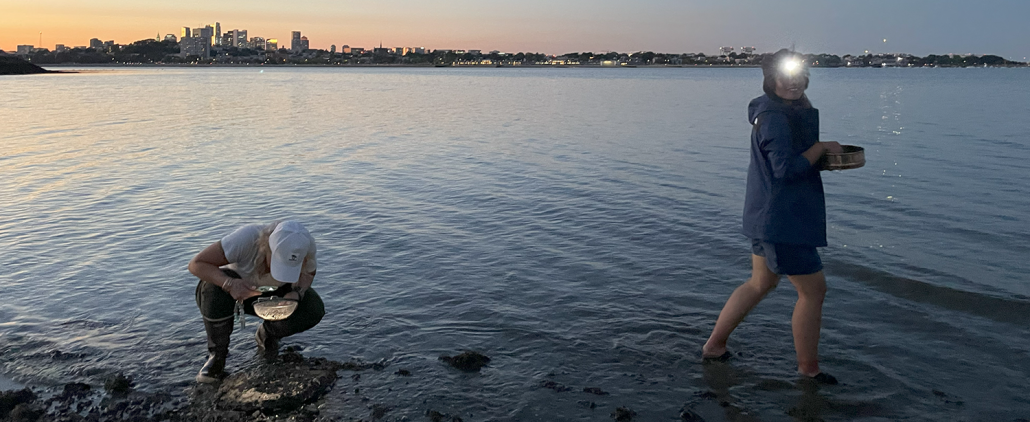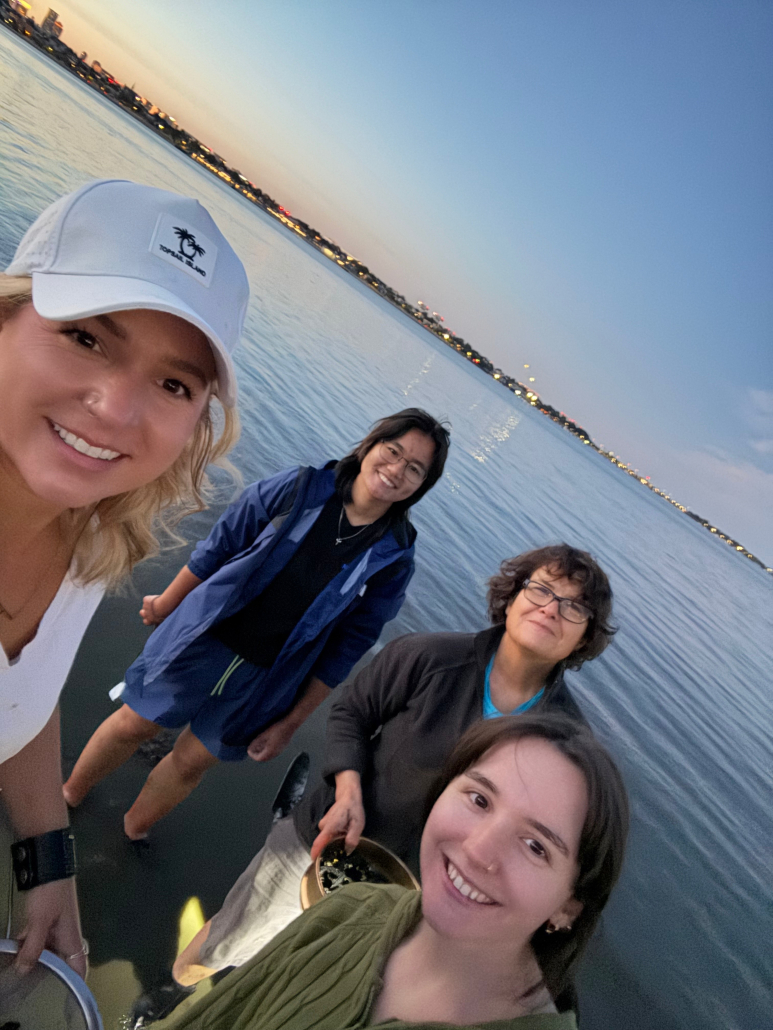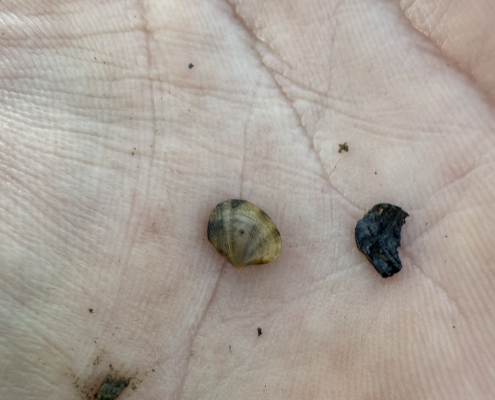On the Lookout for Non-Native Species: Investigating Manila Clams


Many marine non-native species can be found along the New England coast. Some introduced species, such as the common periwinkle snail and the European green crab, have been here for a long time. Others, such as the Asian shore crab, are relatively new invaders.
Manila clams (Ruditapes philippinarum), also known as Japanese littlenecks, are native to shallow coastal waters in east Asia. The species have been introduced to the Mediterranean, the west coast of North America, and other regions because they are widely cultivated for food. They are not native to New England and are not permitted to be farmed here, though they can be sold in markets and served in restaurants.
Recently, Manila clam shells have been spotted here on Massachusetts shores. At first, observers wondered whether these were simply discarded shells from seafood dinners. But a team of scientists and students from MIT Sea Grant, the University of Massachusetts Amherst, and several other organizations, have been investigating whether this species has actually established a population here.
 The Boston Harbor Ecosystem Network (BHEN) organized a field trip to Spectacle Island on July 17, 2025. As part of the BHEN steering committee, MIT Sea Grant Research Scientist Carolina Bastidas participated in the field trip and discussed the mysterious appearance of the Manila clams with Aly Putnam, Postdoctoral Research Associate at the Department of Environmental Conservation at the University of Massachusetts Amherst. Bastidas noted that she had spotted the species in Squantum, Massachusetts as early as October 2024, and observed them again during a summer training for Bivalve Quest, a citizen science project led by Bastidas in partnership with the National Park Service to document species like oysters, clams, and mussels along the Boston Harbor shoreline. Having collaborated on several non-native species Rapid Assessment Surveys – a program that has been conducted in the New England region since 2000 – Bastidas and Putnam agreed that the Manila clam story was worth exploring.
The Boston Harbor Ecosystem Network (BHEN) organized a field trip to Spectacle Island on July 17, 2025. As part of the BHEN steering committee, MIT Sea Grant Research Scientist Carolina Bastidas participated in the field trip and discussed the mysterious appearance of the Manila clams with Aly Putnam, Postdoctoral Research Associate at the Department of Environmental Conservation at the University of Massachusetts Amherst. Bastidas noted that she had spotted the species in Squantum, Massachusetts as early as October 2024, and observed them again during a summer training for Bivalve Quest, a citizen science project led by Bastidas in partnership with the National Park Service to document species like oysters, clams, and mussels along the Boston Harbor shoreline. Having collaborated on several non-native species Rapid Assessment Surveys – a program that has been conducted in the New England region since 2000 – Bastidas and Putnam agreed that the Manila clam story was worth exploring.

Pictured: Aly Putnam (University of Massachusetts Amherst), Isabella Yeung (MIT), Carolina Bastidas (MIT Sea Grant) and Addy Dwyer (Smith College) search for Manila clams in Boston Harbor.
During the BHEN trip, participants found about 40 Manila clam shells at the Spectacle Island sampling site in just a few minutes. Corresponding with other Rapid Assessment Survey collaborators, the initial observations were quickly matched by others in the Cape Cod area. The group now includes 14 collaborators from the Center for Coastal Studies in Provincetown, Chatham Town Shellfish Department, WHOI Sea Grant and Cape Cod Cooperative Extension, Williams College, UMass Amherst, MassBays National Estuary Partnership, Northeastern University, Massachusetts Office of Coastal Zone Management, Fisheries and Oceans Canada, and MIT Sea Grant.
This group is currently sampling and using iNaturalist, a community science platform, to compile information of local occurrences of Manila clams. The team is also obtaining samples for a publication about the discovery, and for genetic analysis to identify the potential sources of this non-native bivalve. Putnam and Bastidas, together with students Isabella Yeung from MIT and Addy Dwyer from UMass Amherst, collected the smallest specimens so far in the region, which support that this species is reproducing in Massachusetts waters. Bastidas noted that the work is just getting started. “The implications of the Manila clam presence for other species and for aquaculture have yet to be investigated in the region,” she said.

Pictured: A small Manila clam specimen found during the team’s sampling trip. Manila clams have a distinctive cross-hatched pattern, while native quahog and surfclam shells mainly have lengthwise ridges running parallel to the shell edge.
Be On the Lookout
To help contribute to this effort, be on the lookout for Manila clams in your area! You can post your field observations and photos to iNaturalist.
From BHEN – Information that is especially useful includes:
- Date, location, live, dead, how many of each, sizes if possible. Live small (< 1.25″/3 cm) clams are especially interesting.
- If dead: are the two halves of the shell still joined (articulated)? Does the shell look brand new, faded, or beat up (how weathered)? Is there any interesting damage (such as a drill hole or v-shaped or square shaped notch at the shell edge, which could indicate particular kinds of predators or use as bait by fishers?)
- Photos are highly encouraged.
- Absences! If you put in some solid effort to finding them at a site, and you find none dead or alive, that’s excellent information too. Absence data are not available from a platform like iNaturalist.



